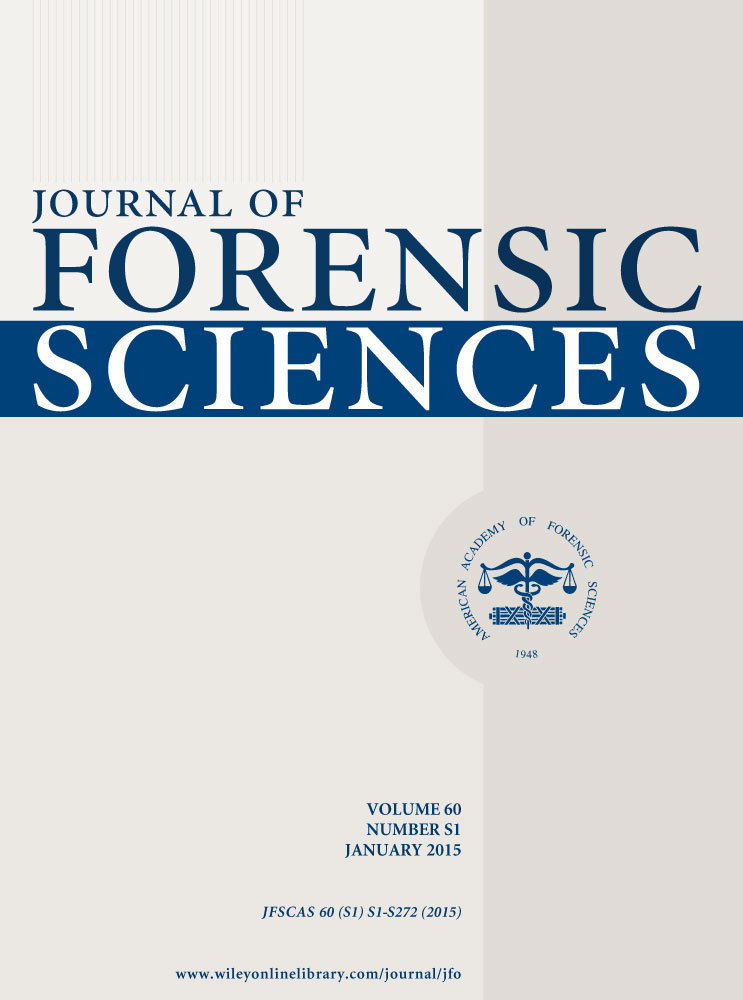Abstract
Forensic anthropologists are regularly asked to assist with the identification of unknown individuals using comparative medical radiography. This study addressed the use of midline medical sternotomy wires as a means for personal identification. Antemortem and postmortem radiographic comparisons were completed by 46 professional forensic anthropologists and anthropology graduate students familiar with comparative medical radiography as a technique for assessing identification. Participants were asked to make five radiographic matches from a pool of 20 radiographs. Participants also completed an anonymous survey detailing their education level and experience making radiographic comparisons. Participants were 99.5% accurate in matching the radiographs. Sensitivity was 98.7%, and specificity was 99.7%. Logistic regression analysis found no statistically significant differences in the participants' ability to make a correct match. As the high accuracy rates indicate, the shape, size, and various characteristics of the sternotomy wires are individualizing and can confidently be used when assisting with personal identification cases.




